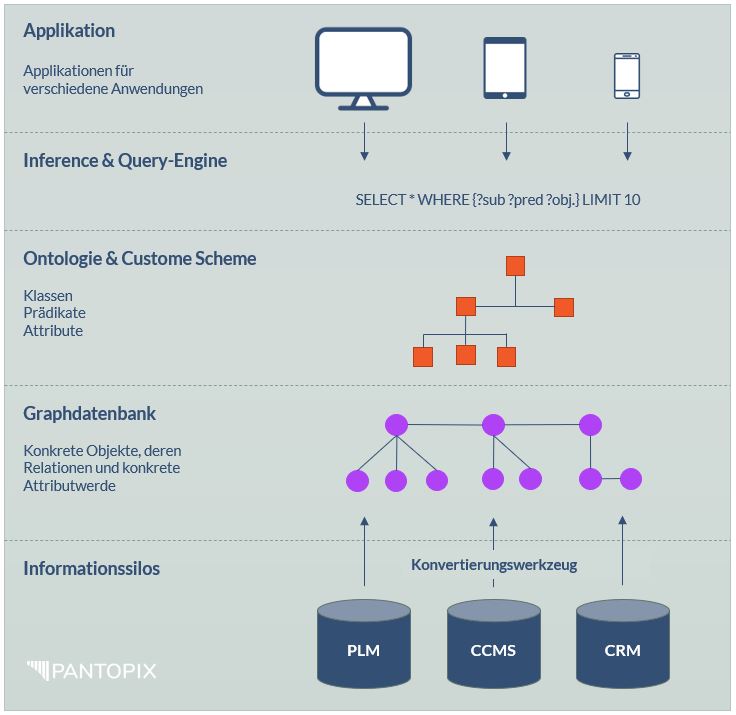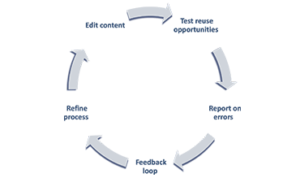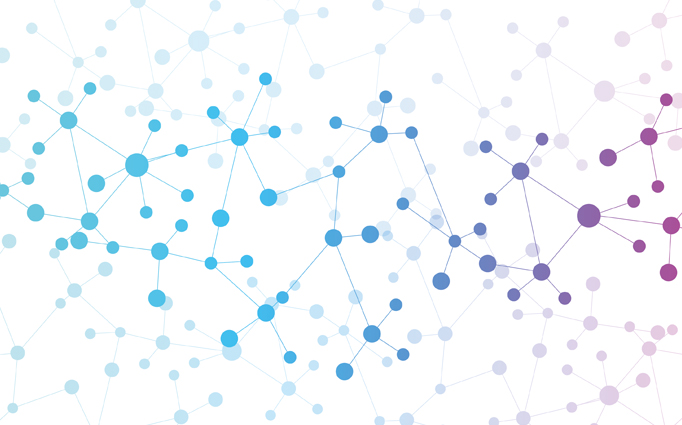Articles
Knowledge graphs in technical communication
Knowledge graphs are one of the top trends in applied artificial intelligence. According to Gartner, by the year 2025, graph-based technologies will be utilized in approximately 80% of all data and analytics innovations (compared to just 10% in 2021). The concept of knowledge graphs is gaining increasing attention in technical communication as well. But what does the term “knowledge graph” actually mean?
Virtualization and Interconnection
Knowledge graphs virtualize and interconnect information that exists in various information silos, both in structured and unstructured formats. The knowledge of a company (or specific business areas) is first abstractly described and modeled in a controlled manner, and then the information from the information silos is integrated into this model. This process makes domain knowledge available and can be used for various purposes, such as intelligent service assistants.

Modeling
The foundation for a knowledge graph is provided by the so-called ontology. An ontology is the explicit, formal representation of the knowledge of a specific domain. It defines the classes of objects that exist in the domain and how these objects are related to each other. Examples of possible classes include “products” and their “components” and “parts,” as well as different “repair information” or “spare parts.” Typical relations include, for example, that a product consists of components or that repair information belongs to a component. This information can be represented in so-called directed graphs. The nodes of the graph represent the subject or objects, and the edges correspond to the predicates. To make this representation machine-readable, it is expressed in a specific language, such as RDF.
The challenge in modeling is to identify the classes and relations that are relevant for future applications. Existing metadata concepts, information models, or nomenclatures are usually used and processed automatically.
Orchestration
In a graph database, the information contained in the information silos is represented by so-called “proxy objects,” and the classes of the ontology are instantiated by concrete information. This allows relations to exist between the concrete instances: for example, the concrete “Compressor X” consists of the concrete component “Crankcase Y,” and there is the “Repair Information Z” for this component, which in turn requires the spare part “Crankcase ET-Y.” These interconnected pieces of information form an excellent basis for value-adding service processes.
A major challenge is to instantiate the concrete information from the information silos in the knowledge graph. This requires one or more conversion tools that automatically transfer existing information from the underlying information and metadata models into the graph database for defined use cases. Often, a simple mapping is used since the information is usually structured or semi-structured. If the information cannot be adequately “mapped,” additional functionalities such as text mining or entity extraction may help.
Use Cases
Knowledge graphs incorporate different types of information from various areas of the company and offer a 360-degree view of the organization. One conceivable application based on a knowledge graph could be an intelligent service assistant that provides service technicians with all service-related information, such as repair instructions, spare parts, or work values, tailored to the specific product and context. Another application could be “recommendation systems” (recommenders) provided to the sales staff as an app or directly to customers over the Internet.
Benefits of Knowledge Graphs
Knowledge graphs can contribute to continuously improving service. They provide answers to some of the key strategic service challenges in companies, such as increasing the first-time fix rate, mean maintenance downtime, or overall equipment effectiveness. Knowledge graphs offer an excellent basis for specific application scenarios such as diagnostic assistants or predictive maintenance. They can help bring information from the field back to requirements engineering and close the development-production-service loop. They can also contribute to revenue growth in service.
Read more about knowledge graphs in our publications in technical communication.
Subscribe to the free newsletter from PANTOPIX.
We will gladly keep you informed regularly about new articles.

From Legacy Systems to DITA: Case Studies in Successful Migration
This article explores real-world insights and lessons learned from successful migration projects, based on two case studies facilitated by PANTOPIX.

Knowledge Graphs and Large Language Models: the perfect combination!
Out-of-the-box solutions for RAG systems are becoming increasingly widespread. They promise to make a company’s knowledge accessible from documents such as PDFs or Word files using Large Language Models (LLMs) in the form of a chat.

Semantic layers of the Product Information Management Systems (PIM)
Companies rely on Product Information Management (PIM) systems to create, manage, and distribute product information across various channels. We can offer PIM systems software solutions for our industrial clients.
Contact us
Maraike Heim
Senior Marketing Manager
- maraike.heim@pantopix.com

